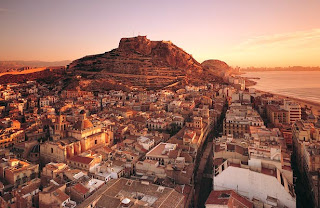Recipe for Birthday Party Paella Serves 10.
3 tablespoons olive oil
Adobo All Purpose Seasoning*
6 fresh hot Italian sausages (about 1 3/4 pounds)
12 chicken thighs with skin and bones (about 4 1/4 pounds), excess fat trimmed
2 very large onions, chopped (about 5 cups)
10 garlic cloves, chopped,
14 1/2 ounces diced Fire Roasted tomatoes, (about 1 1/2 cups)
2 bay leaves
4 medium zucchini, halved crosswise, then quartered lengthwise
3 red bell peppers, cut into 1-inch-wide strips
1 1/2 pounds uncooked large shrimp, peeled, deveined
Ancho Chili Powder
2 cups Goya Yellow “Spanish Rice” supplemented with ½ cup of long grain rice.
5 cups canned low-salt chicken broth
2 heaping teaspoons smoked paprika
Chopped fresh parsley for garnish.
Heat 1 tablespoon oil in heavy large shallow pot over medium-high heat. Add sausages and sauté until cooked through, turning often, about 10 minutes. Transfer to large bowl.
Sprinkle chicken generously with Adobo seasoning and freshly ground black pepper. Working in batches, add chicken, skin side down, to pot. Cover and cook until brown, about 6 minutes. Turn chicken over, cover and cook until brown and cooked through, about 8 minutes longer. Transfer chicken to bowl with sausages.
Add onions and 10 chopped garlic cloves to pot; sauté until tender, about 8 minutes. Add tomatoes and bay leaves; stir 2 minutes. Stir in zucchini and bell peppers. Transfer to another large bowl.
Toss shrimp with remaining 2 tablespoons oil, and sprinkle with ancho chile powder. (Chicken-sausage mixture, vegetable mixture and shrimp mixture can be prepared 6 hours ahead. Cover separately and refrigerate.)
Preheat oven to 375°F. Brush one 18 x 12 x 2 1/4-inch roasting pan with olive oil. Spread the rice evenly over the bottom of the roasting pan. Then spread the vegetable mixture over the rice.
Cut sausages diagonally into 1-inch slices. Using wooden spoon, push sausage and chicken pieces into rice mixture; pour any juices from bowl over.
Bring 5 cups chicken broth and two heaping teaspoons of smoked paprika to boil in medium saucepan. Pour evenly over rice mixture. Cover roasting pan tightly with foil. Bake until rice is cooked, about 1 hour. Remove foil and place dish in oven for another hour.
Take dish out of the oven and sprinkle shrimp mixture with salt and pepper. Arrange atop rice mixture. Cover pan with foil; bake until shrimp are opaque in center, about 20 minutes longer. Sprinkle with parsley. Spoon paella onto plates and serve.



